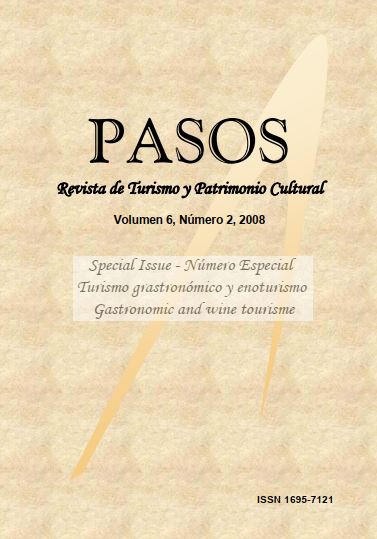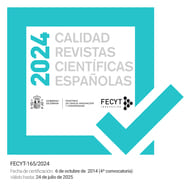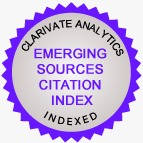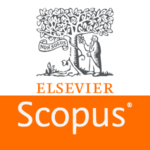The impact of beer type, pizza spiciness and gender on match perceptions
DOI:
https://doi.org/10.25145/j.pasos.2008.06.014Keywords:
food and drink pairing, spice, beer, pizza, gender differencesAbstract
This exploratory study surveys preferences of participants towards pairing three categories of beer (lager, ale and stout) with a non-spicy and spicy pizza. The goals of this study are to determine the level of a ‘just right’ match of pizza style with each beer type, determine any differences by gender, and to explore if spice has an impact on participants’ beer selection and beer preference. Implications of this research apply to restaurateurs’ ability to appropriately cater their beer and pizza offerings in terms of menu design and pro-duct delivery.
Downloads
Publication Facts
Reviewer profiles N/A
Author statements
- Academic society
- PASOS. Revista de Turismo y Patrimonio Cultural
- Publisher
- Instituto Universitario de Investigación Social y Turismo. Universidad de La Laguna (España) - Instituto Universitario da Maia ISMAI (Portugal)
References
Baldy, M.W. 2003. The university wine course, 3rd ed. The Wine Appreciation Guild, San Francisco, CA.
Beaumont, S. 2006. “Cocktailians & restaurateurs raise the bar with beer & food pairings”. Na- tion’s Restaurant News, 40(37): 1- 3.
Bellamy, G. 2005. “Beer-food pairings brew up interest”. Restaurant Hospitality Journal, 89(7):98.
Billups, A. 2007, November 8. “Have food, will travel”. Washington Times, On-line document:
http://www.washingtontimes.com/apps/p bcs.dll/article?AID=/20071108/NATION/11108 0101/1002
Blair, E., Cordua, G., Geiger, S., Payne, C., Wansink, B. 2006. “Wine promotions in restaurants”. Cornell Hotel & Restaurant Quarterly, 47: 327-336.
Charters, S., Pettigrew, S. 2006. “Consumers expectations of food and alcohol pairing”. British Food Journal, 108(3): 169-180.
Cliff, M., King, M. 2004. “Evaluation of ideal wine and cheese pairs using a deviation-from-ideal scale with food and wine experts”. Journal of Food Quality, 28: 245-56.
Cummings, M. 2006, May 19. “Matching international beers with meals: A trend already in vogue in the U.K.” The Post Newspaper, B:1-3.
Fried, E. 1993. “Dinner’s perfect companion”. Black Enterprise Journal, 24(1): 95.
Fried, E. 1991. “Wines & spirits. How to hold a beer tasting”. Black Enterprise Journal,22(1): 117.
Friedrick, J. 2006. “Get ideas brewing for cheese & beer pairings”. Gourmet News Periodical, June: 12-13.
Friis, K., Gronbaek, M., Johansen, D., Sko- venborg, E. 2006. “Food buying habits of people who buy wine or beer: Cross sectional study”. BMJ Online: pp. 1-4.
Gilbert, D. 2005. “ 'Super-tasters' may avoid tart vege- tables, fruits that contain cancer pre-
ventive compounds, says U-M researcher”. Online document at http://www.umich.edu/~urecord/9697/Fe b18_97/artcl03.htm
Guinard, J-X., Yip, D., Cubero, E., Mazzucchelli, R. 1998. “Quality ratings by experts and relation with descriptive analysis ratings: A case study with beer”. Food Quality and Preference, 10(1): 59-67.
Harrington, R.J. 2008. Food and wine pairing: A sensory experience. John Wiley & Sons, New York.
Harrington, R.J. & Hammond, R. 2006. “Body deviation-from-match: The yin and yang of wine and food pairing?” Journal of Culinary Science & Technology, 5(1): 51-69 .
Immer, A. 2002. Great tastes made simple: Extraordi- nary food and wine pairing for every palate. Broadway Books, New York.
Jackson, R.S. 2000. Wine science: Principles, practice, perception, 2nd ed. Academic Press, New York.
Kochak, J. 1999. “Brew plate special”. Restaurant Business Periodical, 98(15): 41-48. Market Facts. 2007. “Triangle plots: Graphic display of ‘just right’ scale data”. Research on Re- search, 56, 1-6. Market Facts of Canada, Toronto, Canada.
Oliver, G. 2003. The brewmaster’s table: Discovering the pleasures of real beer with real food. Reed. Elsevier, New York.
Pettigrew, S. 2005. “King or pawn? The role of the Aus- tralian beer drinker”. Journal of Re- search for Consumers, 9: 1-7.
Popp, J. 2006. “The third dimension”. Restaurants & Institutions, 116(7), 45-46.
Pearce, T. 2007. “Beer and cheese pairings. Impress your guests”. The Globe and Mail, Retrieved at: www.theglobeandmail.com/servlet/story/ LAC.20070120.IMPRESS20.com
Rande, W. & Luciani, V. 2001. The beverage service world. Prentice Hall, Upper Saddle River, NJ. Rubin, J. 2007. “Pairing beer and food: What tastes best with a pilsner or a stout? How to match beer with your meals”. Online document at: http://www.thestar.com/comment/colum nists/article/191398
Schmid, A.W.A. 2004. The hospitality manager’s guide to wines, beers and spirits. Prentice Hall, Upper Saddle
River, NJ. Shriver, J. 2006. “Beer vs. wine: Is it war?” U.S.A Today (July 13). Retrieved at:
http://www.azcentral.com/home/wine/art icles/0713beervwine0713.html
Stinchfield, M. 2004. “Building a better beer list”. Restaurant Hospitality, 88(5), 130-132.
The Beer Store. 2007. “Did you know the Beer Store is the only place in Ontario you’ll find the largest selection of beer to match any dish?” Retrieved at http://www.thebeerstore.ca/brandcreativ e.asp
Webster’s Online. 2007. Websters Online Dictionary. Retrieved at: http://www.mw.com/
Zac, A. 2007. “Pairings: Shocking the masses, forc- ing beer into wine territory”. Retrieved from: http://chewingonaviancranium.blogspot. com/2006_06_01_archive.html
Downloads
Published
How to Cite
Issue
Section
License
I confirm that the work is original (of my/our authorship), and that it will not be submitted to other journals or publications until the final resolution of the review process in PASOS, RTPC.
I authorize the publication of my work by PASOS, PSTN of free and open access in any of the formats that I deem appropriate, for an indefinite period of time and as a non-remunerated collaboration.
Likewise, the author(s) understands that the published work may be linked or deposited on any server or included in other publications (republication), provided that the new place and/or new edition references the original publication and acknowledges the authorship and copyright ownership of PASOS RTPC publications.
Authors understand that a plagiarism-self-plagiarism check will be performed, and the article may be removed at any time from the editorial flow.










